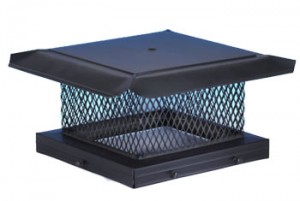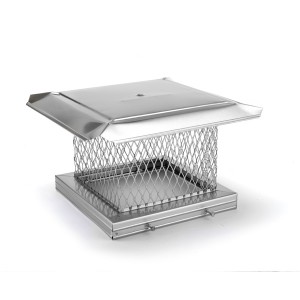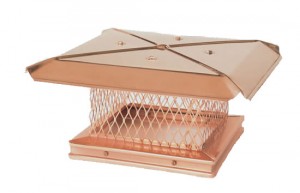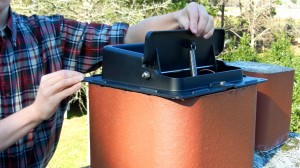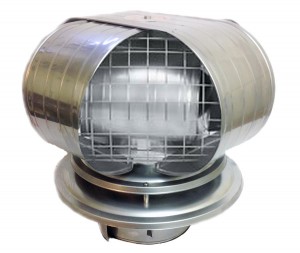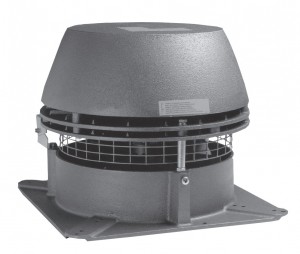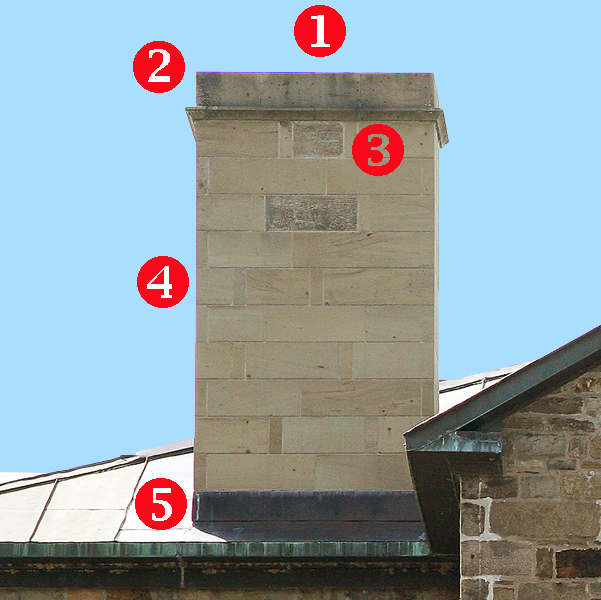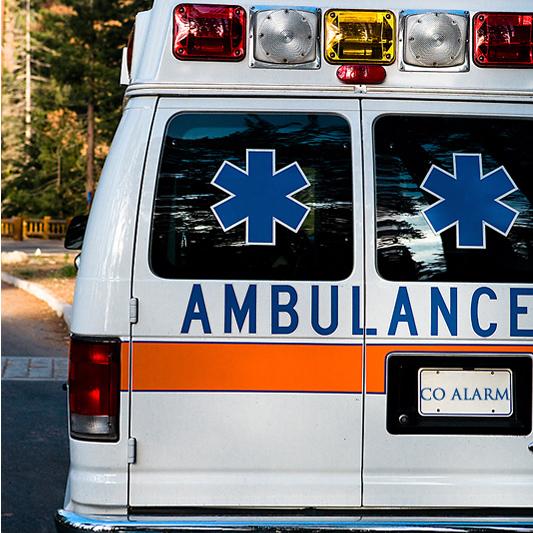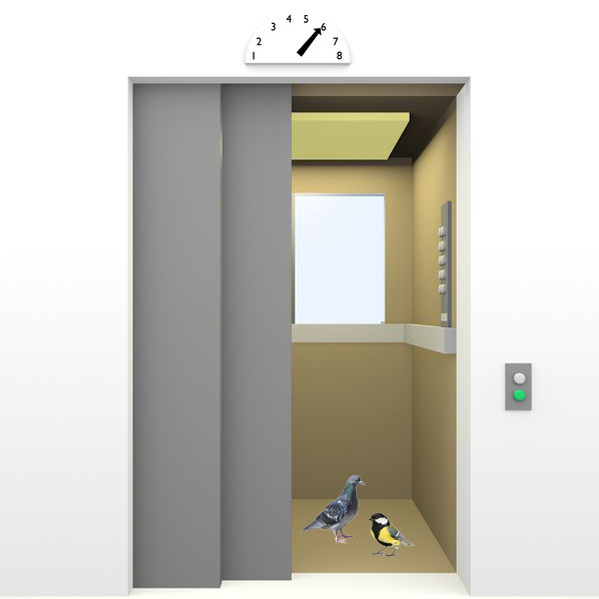by Monte
Share
by Monte
Share

Installing a chimney cap to keep rain and animals out of your chimney is an easy, do-it-yourself kind of job. In most cases, you need only ordinary household tools like a battery-powered drill and a screwdriver. While it’s not rocket science, the job of installing a chimney cap has 7 hidden pitfalls. This quick list will help you avoid chimney cap mistakes.
Seven Chimney Cap Mistakes to Avoid When You Install a Chimney Cap
![]() Not wearing safety gloves while assembling and installing your chimney cap. Chimney caps are made of sheet metal and may have very sharp edges that can cut deeply into fingers and hands.
Not wearing safety gloves while assembling and installing your chimney cap. Chimney caps are made of sheet metal and may have very sharp edges that can cut deeply into fingers and hands.
![]() Not inspecting and possibly repairing your chimney crown or chase cover before installing a chimney cap is a mistake because you may be covering up trouble. If your chimney has a concrete crown as its top surface, look for cracks or loose, crumbling chunks. If there are small cracks, under 1/8” across, you can apply a latex coating like CrownCoat, which is made for that purpose. Larger cracks and missing chunks can be repaired with a product called CrownSeal. Just covering a damaged crown with a chimney cap will not prevent further deterioration, as moisture from the air enters the damaged areas and freezes.
Not inspecting and possibly repairing your chimney crown or chase cover before installing a chimney cap is a mistake because you may be covering up trouble. If your chimney has a concrete crown as its top surface, look for cracks or loose, crumbling chunks. If there are small cracks, under 1/8” across, you can apply a latex coating like CrownCoat, which is made for that purpose. Larger cracks and missing chunks can be repaired with a product called CrownSeal. Just covering a damaged crown with a chimney cap will not prevent further deterioration, as moisture from the air enters the damaged areas and freezes.
If you have a frame chimney, its top is a metal chase cover. Look for holes or significant amounts of rust. Many builders install galvanized steel chase covers instead of stainless steel ones. The galvanized steel chase covers will need to be replaced after a few years.
![]() Not measuring carefully and correctly. Measuring for a chimney cap is an easy DIY project, but it needs to be done with attention to specific details. To avoid mistakes, download our Chimney Cap Easy Measure Guide. It will guide you through the process of gathering the measurements you need to get the right sized chimney cap.
Not measuring carefully and correctly. Measuring for a chimney cap is an easy DIY project, but it needs to be done with attention to specific details. To avoid mistakes, download our Chimney Cap Easy Measure Guide. It will guide you through the process of gathering the measurements you need to get the right sized chimney cap.
![]() Not selecting the right metal. Stainless steel chimney caps generally come with a lifetime warranty, making them a best value. Galvanized steel chimney caps are cheaper, but last only a few years before rusting out in most parts of the US. However in dry areas like the Southwest, they may last for many years. Copper chimney caps are the most expensive and are generally used for aesthetic reasons. As copper chimney caps age, they develop a gray-green patina that will stain light colored chimneys.
Not selecting the right metal. Stainless steel chimney caps generally come with a lifetime warranty, making them a best value. Galvanized steel chimney caps are cheaper, but last only a few years before rusting out in most parts of the US. However in dry areas like the Southwest, they may last for many years. Copper chimney caps are the most expensive and are generally used for aesthetic reasons. As copper chimney caps age, they develop a gray-green patina that will stain light colored chimneys.
![]() Not using the correct installation hardware. Use only the hardware that comes with the chimney cap; don’t substitute. Most manufacturers of top mount chimney caps, the kind that attaches to the chimney crown, supply Tapcon screws for installation. After pre-drilling, these screws cut their own threads as they go in, creating a waterproof attachment. Using a different screw can let water enter the chimney crown and begin to damage it through freezing and thawing. Stainless steel chimney caps that attach to flue pipes come with stainless steel screws. Substituting non-stainless steel screws can initiate electrolysis that may “freeze” the screws in place.
Not using the correct installation hardware. Use only the hardware that comes with the chimney cap; don’t substitute. Most manufacturers of top mount chimney caps, the kind that attaches to the chimney crown, supply Tapcon screws for installation. After pre-drilling, these screws cut their own threads as they go in, creating a waterproof attachment. Using a different screw can let water enter the chimney crown and begin to damage it through freezing and thawing. Stainless steel chimney caps that attach to flue pipes come with stainless steel screws. Substituting non-stainless steel screws can initiate electrolysis that may “freeze” the screws in place.
![]() Not installing a top damper, or at least considering one. Top dampers, as the name implies, install at the top of the chimney, under the chimney cap. Top dampers operate by means of a cable that is dropped down the chimney to the firebox, allowing you to close the chimney off when it’s not in use. Energy savings from top dampers are substantial. You’ll need to make your chimney cap taller if your install a top damper so that there is still at least 5” clearance when the damper is in the open position. Or you can get a top damper with the chimney cap included.
Not installing a top damper, or at least considering one. Top dampers, as the name implies, install at the top of the chimney, under the chimney cap. Top dampers operate by means of a cable that is dropped down the chimney to the firebox, allowing you to close the chimney off when it’s not in use. Energy savings from top dampers are substantial. You’ll need to make your chimney cap taller if your install a top damper so that there is still at least 5” clearance when the damper is in the open position. Or you can get a top damper with the chimney cap included.
![]() Not addressing draft problems when selecting and installing a chimney cap. If your fireplace gives off smoke on windy days only, a VacuStack chimney cap may solve the problem. Wind passing through a VacuStack creates negative pressure over the flue, improving the draft.
Not addressing draft problems when selecting and installing a chimney cap. If your fireplace gives off smoke on windy days only, a VacuStack chimney cap may solve the problem. Wind passing through a VacuStack creates negative pressure over the flue, improving the draft.
If the fireplace smokes on non-windy days first make sure there is air available to replace the hot air going up the chimney. Just open a window about one inch and see if that corrects the problem. If not, consider installing an Enervex chimney fan. These fans cure any and all back-puffing problems.
Now you have all you need to know to avoid chimney cap mistakes when you before you purchase one and as you install it.
5 Ways to Prevent Chimney Leaks A leaking pipe, a leaking roof, a leaking window, a leaking chimney – none of them is good. Here are 5 ways make your chimney leak-proof and prevent chimney leaks. See how to fix chimney leaks and prevent them in, through and around your chimney. #1 Way to Prevent Chimney Leaks: Install a […]
When is a headache, nausea, and fatigue not “just the flu” and, instead, carbon monoxide poisoning? And how can you prevent carbon monoxide poisoning in your home? Every year 20,000 Americans are treated in emergency rooms for carbon monoxide poisoning. But many of those at first thought they were dealing with a run-of-the-mill bug. Those […]
Which of these summer fireplace myths do you believe? Learn the facts that might surprise you about fireplaces in summertime. Summer Fireplace Myth #1: Since you won’t be burning a fire in hot weather, your fireplace will have to suffer from Black Hole Syndrome. A fireplace candelabra brings the tiny fires of candlelight to your fireplace without […]
Some people find a bird stuck in their chimney or fireplace and panic. Others search for a solution such as the ones we offer for removing a bird stuck in chimney or sitting in a fireplace. The most creative come up with their own unique solution for a bird stuck in chimney. That’s what Nic did when […]

